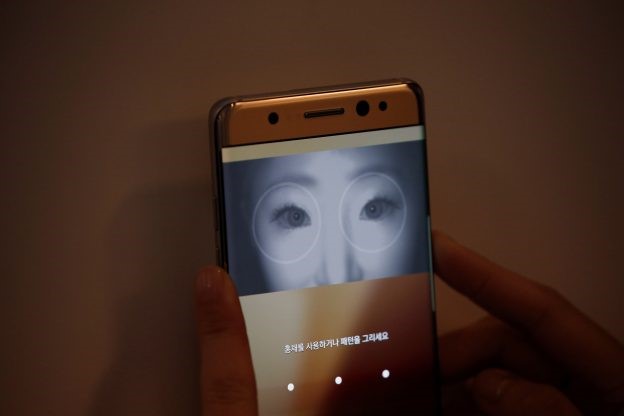Fingerprint recognition will soon become outdated in smartphone applications, in its place iris recognition will emerge as the new trending technology, and might even drive mobile payment developments, according to ABI Research’s latest report.
The research institute projected global shipments of iris scanner equipped smartphones will reach nearly 300 million by 2021.
Lu observed the human iris unique features in the human body, and its unchanging characteristics has encouraged smartphone vendors to gradually adopt iris scanning capabilities into products as a secure biometric identification solution for unlocking devices or to certify mobile payments.
 |
|
Samsung Note 7 iris recognition features. (Photo courtesy of TPG) |
“We find that users are still wary to rely on mobile payments due to security concerns, but iris scanning will help drive future mobile payment adoption,” she said.
Iris recognition scanning does not require physical contact, freeing users from PIN numbers and fingerprint scans. The iris sensors in mobile devices incorporate camera chip and IR LED for illumination of eyes so the sensors can detect iris features even in semi-dark conditions. The sensor can operate as a separate unit from the front camera.
Fujitsu was the first smartphone maker to announce an iris scanning phone back in March 2015, which was followed by Microsoft’s launch of Lumia 950 and 950 KL. Other iris scanning smartphones on the market include ZTE’s Nubia Prague S, and HP’s Elite x3, which all are equipped with iris scanning features.
Samsung has been the latest leading consumer electronic manufacturer to launch an iris scanning features in its flagship Note 7 smartphone in 2016. Apple has not joined the iris recognition bandwagon with the release of iPhone 7, which ABI Research projected will delay its introduction into Apple devices.
“At the moment, iris scanning is complementary to the more mature fingerprint scanning,” concludes Lu. “However, we expect iris scanning to gain more popularity due to its higher stability and less susceptibility to external damage. Though iris scanning is geared toward high-end models now, we predict that it will be available in less expensive smartphones in the long run.”





 CN
TW
EN
CN
TW
EN





